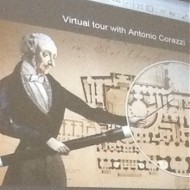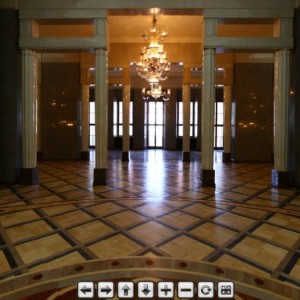SIBMAS-TLA Conference: Digital Humanities
With such a contentious debate still brewing over what exactly digital humanities means, the plenary session at the SIBMAS-TLA conference provided the perfect smorgasbord of innovative projects that are seeking to not only define the movement, but challenge and push it into new spheres. The session opened with a joint presentation from Agathe Sanjuan of the Comédie-Francaise and Jamie Folsom of MIT Hyperstudio where they have digitized and data mined the daily registers of the Comédie-Francaise, providing a glimpse into not only the theatre’s performances, but also their economic and social functions as a cultural institution.
The idea of a theatre’s history was mirrored in a presentation from Monika Chudzikowska and Karazyna Wodarska-Ogidel from the Theatre Museum in Warsaw. The National Opera in Warsaw has a very rich history as an institution but also as a space within the city, and their new project featured on their website uses clever animations to bring history to life and connect the dots of the institution’s choppy past. The visual tour of the Theatre, similar to digitizing the Comédie-Francaise’s registers, helps to provide context for important pieces not only in performance history, but also in social and cultural history of their respective nations.
The other half of the plenary presented a much more academic approach to the digital humanities, as well as the rift that has been developing in the field between the physical and the digital. Micah Hoggatt of the Harvard Theatre Collection provided a provocative insight into the demands of researchers, professors, and students to have increased physical and digital access, arguing that there are “shades of meaning” that may simply not be captured digitally. With the new paradigm of online courses, particularly Massive Open Online Courses, or MOOCs, however, there is a definite need for digital access to extend opportunities to those students and researchers not immediately on campus.
So what happens when you lose some of your physical collections out to the digital? Alan Jones of the Royal Conservatoire of Scotland addressed just that, arguing that there is a “digital metamorphosis” going on in libraries, where our skill sets and competencies need to change with the changing academic environment. Of particular interest was his discussion of the “internationalization of ivory towers,” the idea that education is no longer localized but international scope, evidenced in advancements like MOOCs. This idea revolutionizes our consideration of maintaining physical collections at their current glory, with Jones arguing that the space of the library itself is a commodity that we cannot underestimate as our physical collections dwindle.
Thursday rounded out with a panel on recorded performance, highlighting options that aim to supplement and replace the physical collections of performance that we have prized for so long. With representatives from Alexander Street Press, Digital Theatre Plus, and the Metropolitan Opera, the conference delegates were exposed to not only the materials available in these digital collections, but the methodologies for collection and organization employed that help to make these vendors seem less like they are trying to usurp the power of the physical and more like libraries 2.0. With more and more collections migrating online with increased functionality and options, there are serious shifts we need to consider in educational practices that can profoundly benefit from such resources, harkening back to Nic Leonhardt’s “enhanced humanities” that lie at the core of the digital humanities. All of Thursday’s digital humanities presenters are aiming to enhance the humanities, breathing life into the old, introducing us to the new, and everything in between.
Emily Witkowski
Rutgers University


